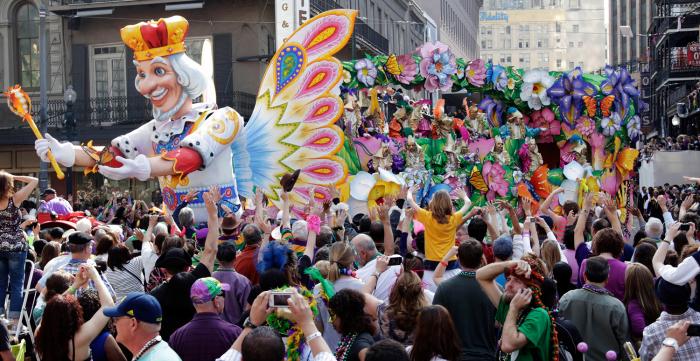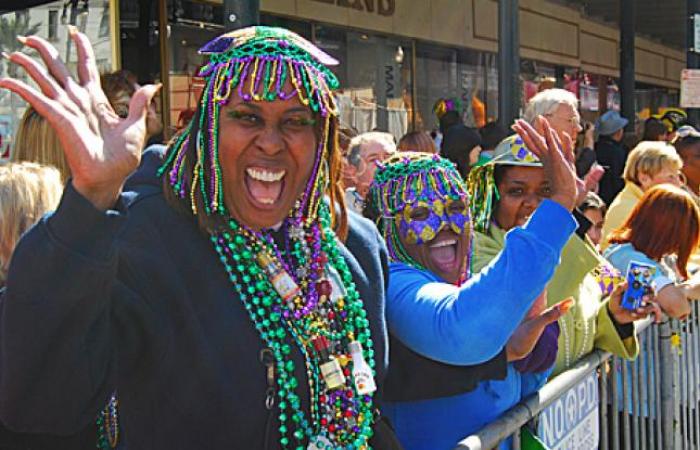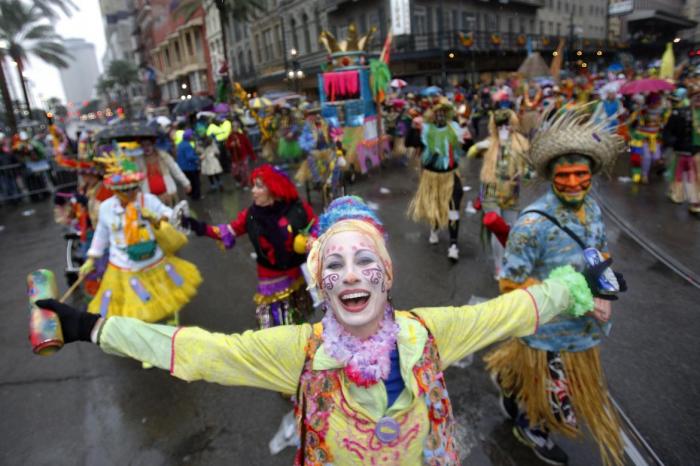We ask you, urgently: don't scroll past this
Dear readers, Catholic Online was de-platformed by Shopify for our pro-life beliefs. They shut down our Catholic Online, Catholic Online School, Prayer Candles, and Catholic Online Learning Resources essential faith tools serving over 1.4 million students and millions of families worldwide. Our founders, now in their 70's, just gave their entire life savings to protect this mission. But fewer than 2% of readers donate. If everyone gave just $5, the cost of a coffee, we could rebuild stronger and keep Catholic education free for all. Stand with us in faith. Thank you.Help Now >
7 Fun facts about Fat Tuesday and Mardi Gras celebrations
FREE Catholic Classes
Mardi Gras is French for Fat Tuesday; it comes directly before Ash Wednesday. "Mardi Gras is a raucous celebratory affair that serves as a final shebang before the 40-day abstinence of Lent," explains The Huffington Post.

Mardi Gras first became a holiday in 1582.
Highlights
Catholic Online (https://www.catholic.org)
3/4/2025 (3 weeks ago)
Published in U.S.
Keywords: Mardi gras, Fat Tuesday, facts, fun facts, celebration, Ash Wednesday, Lent
LOS ANGELES, CA (Catholic Online) - Amidst all the metallic-colored beads, loud music and parades, the foundation for the holiday often gets lost.
1. "Mardi Gras, or 'Fat Tuesday,' is the culmination of Carnival, which by its Latin roots means the 'removal of flesh/meat,'" explains Author Greg Tobin to The Huffington Post. Christians often abstained from dairy and meat products altogether.
2. In some countries, the day is called "Shrove Tuesday" after shrive, which means "to confess." "This refers to the unofficial custom of going to confession on the Tuesday before Ash Wednesday as a way of shedding sin and guilt before the spiritual journey of Lent," stated The Huffington Post.

3. Mardi Gras became a holiday in 1582, when Pope Gregory XIII placed it on his Gregorian calendar the day before Ash Wednesday. It first appeared in North America in the late 17th century with the LeMoyne brothers' claim on Louisiana.
4. Although it is most famously celebrated in New Orleans and Rio de Janerio, Mardi Gras is a highly international holiday. Major celebrations take place in Germany (as "Karneval"), Italy (as "Martedi Grasso"), Trinidad (as "J'Ouvert"), and Mexico (as "Martes de Carnaval"), according to The Huffington Post.

5. The traditional colors of Mardi Gras and the beads started with the king of the first daytime Carnival in 1872. "He picked the colors to represent royalty: purple for justice, gold for power and green for faith," stated Richmond Times-Dispatch.
6. The masks worn during the celebrations were to escape class constraints.

7. Mardi Gras celebrations now have a Rex, "the king of the Carnival. Rex became a part of New Orleans' Mardi Gras celebration in 1872. Every year, the city chooses a new Rex, someone well-known in New Orleans, to receive the symbolic Key to the City," explained International Business Times.
---
'Help Give every Student and Teacher FREE resources for a world-class Moral Catholic Education'
Copyright 2021 - Distributed by Catholic Online
Join the Movement
When you sign up below, you don't just join an email list - you're joining an entire movement for Free world class Catholic education.

-

- Stations of the Cross
- Easter / Lent
- 5 Lenten Prayers
- Ash Wednesday
- Living Lent
- 7 Morning Prayers
- Mysteries of the Rosary
- Litany of the Bl. Virgin Mary
- Popular Saints
- Popular Prayers
- Female Saints
- Saint Feast Days by Month
- Pray the Rosary
Massive Egg Recall Highlights the Dangers of Centralized Food Systems: Why We Need Local Solutions
Pope Francis Advances Five Causes for Sainthood
Finding Strength in Faith During Job Market Uncertainty
Daily Catholic
 Daily Readings for Tuesday, April 01, 2025
Daily Readings for Tuesday, April 01, 2025 St. Hugh of Grenoble: Saint of the Day for Tuesday, April 01, 2025
St. Hugh of Grenoble: Saint of the Day for Tuesday, April 01, 2025 Prayer for God's Help in Daily Actions: Prayer of the Day for Friday, March 14, 2025
Prayer for God's Help in Daily Actions: Prayer of the Day for Friday, March 14, 2025 Daily Readings for Monday, March 31, 2025
Daily Readings for Monday, March 31, 2025 St. Benjamin: Saint of the Day for Monday, March 31, 2025
St. Benjamin: Saint of the Day for Monday, March 31, 2025- To Perceive Animals as God's Gifts: Prayer of the Day for Thursday, March 13, 2025
![]()
Copyright 2025 Catholic Online. All materials contained on this site, whether written, audible or visual are the exclusive property of Catholic Online and are protected under U.S. and International copyright laws, © Copyright 2025 Catholic Online. Any unauthorized use, without prior written consent of Catholic Online is strictly forbidden and prohibited.
Catholic Online is a Project of Your Catholic Voice Foundation, a Not-for-Profit Corporation. Your Catholic Voice Foundation has been granted a recognition of tax exemption under Section 501(c)(3) of the Internal Revenue Code. Federal Tax Identification Number: 81-0596847. Your gift is tax-deductible as allowed by law.

 Daily Readings for Tuesday, April 01, 2025
Daily Readings for Tuesday, April 01, 2025 St. Hugh of Grenoble: Saint of the Day for Tuesday, April 01, 2025
St. Hugh of Grenoble: Saint of the Day for Tuesday, April 01, 2025 Prayer for God's Help in Daily Actions: Prayer of the Day for Friday, March 14, 2025
Prayer for God's Help in Daily Actions: Prayer of the Day for Friday, March 14, 2025 St. Benjamin: Saint of the Day for Monday, March 31, 2025
St. Benjamin: Saint of the Day for Monday, March 31, 2025

